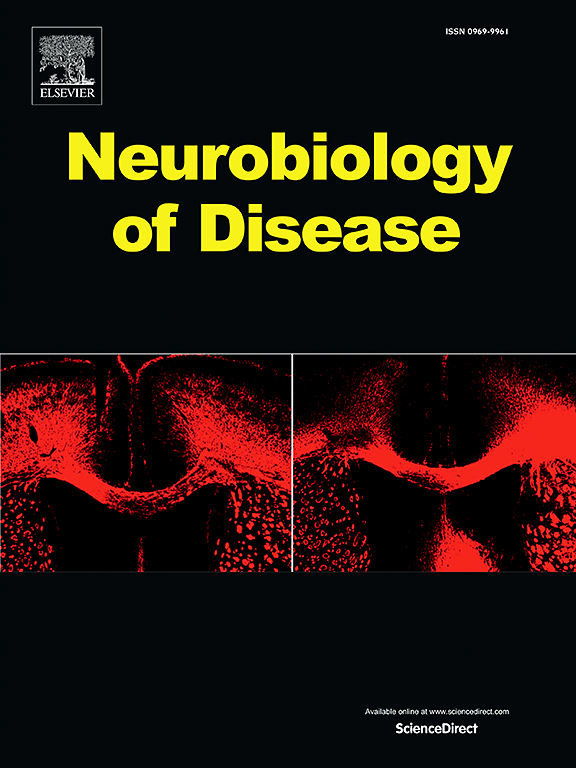Data-driven, cross-sectional image-based subtyping and staging of brain volumetric changes in Parkinson's disease
IF 5.6
2区 医学
Q1 NEUROSCIENCES
引用次数: 0
Abstract
Background
Several subtyping methods have been proposed to characterize Parkinson's disease (PD) progression, yet the trajectory of subcortical and cortical neurodegeneration and its clinical implications remain unclear.
Objectives
We aimed to conduct a strictly image-based, data-driven classification of PD progression through Subtype and Stage Inference (SuStaIn) algorithm.
Methods
Brain volumetric data from 565 patients with PD and 150 propensity-matched healthy controls were analyzed. 16 regions of interest, including 9 cortical and 7 deep grey matter structures, were segmented from T1-weighted magnetic resonance images. Clinical data, including REM sleep behavior disorder (RBD), levodopa equivalent daily dose (LEDD), and motor complications were collected. SuStaIn was trained and tested using a 10-folds cross-validation and identified two distinct PD progression subtypes, which were compared for differences in clinical and radiological characteristics.
Results
We found two distinct neurodegenerative trajectories: deep grey matter (DG)-first and cortex (CO)-first. The CO-first subtype had a higher prevalence of RBD (p = 0.009) and levodopa-induced dyskinesia (p = 0.024) than the DG-first subtype. Disease progression was faster in the CO-first subtype (0.203 year/stage, LEDD increase 59.3 mg/year), than in the DG-first subtype (0.081 year/stage, LEDD increase 45.1 mg/year, respectively). Regardless of the subtypes, the sensorimotor and auditory cortices were the earliest affected cortical regions, while the amygdala was the first affected subcortically. A subset of participants (n = 186) showed no significant atrophy progression.
Conclusions
Our findings support the existence of two distinct subtypes of PD progression based on neuroimaging data. Longitudinal studies are warranted to track their evolution.
数据驱动、基于横断面图像的帕金森病脑容量变化亚型和分期
背景:已经提出了几种亚型方法来表征帕金森病(PD)的进展,但皮层下和皮层神经变性的轨迹及其临床意义尚不清楚。目的:我们旨在通过Subtype and Stage Inference (SuStaIn)算法对PD进展进行严格的基于图像、数据驱动的分类。方法:分析565例PD患者和150例倾向匹配的健康对照者的脑容量数据。从t1加权磁共振图像中分割出16个感兴趣的区域,包括9个皮层和7个深部灰质结构。收集临床数据,包括REM睡眠行为障碍(RBD)、左旋多巴当量日剂量(LEDD)和运动并发症。SuStaIn接受了10倍交叉验证的训练和测试,并确定了两种不同的PD进展亚型,比较了临床和放射学特征的差异。结果:我们发现了两种不同的神经退行性轨迹:深部灰质(DG)优先和皮层(CO)优先。co - 1亚型的RBD患病率(p = 0.009)和左旋多巴引起的运动障碍患病率(p = 0.024)高于dg - 1亚型。co - 1亚型(0.203 年/期,LEDD增加59.3 mg/年)比dg - 1亚型(0.081 年/期,LEDD增加45.1 mg/年)的疾病进展更快。无论何种亚型,感觉运动和听觉皮层是最早受影响的皮层区域,而杏仁核是皮层下最早受影响的皮层区域。一部分参与者(n = 186)没有明显的萎缩进展。结论:基于神经影像学数据,我们的研究结果支持PD进展的两种不同亚型的存在。对它们的演变进行纵向研究是有必要的。
本文章由计算机程序翻译,如有差异,请以英文原文为准。
求助全文
约1分钟内获得全文
求助全文
来源期刊

Neurobiology of Disease
医学-神经科学
CiteScore
11.20
自引率
3.30%
发文量
270
审稿时长
76 days
期刊介绍:
Neurobiology of Disease is a major international journal at the interface between basic and clinical neuroscience. The journal provides a forum for the publication of top quality research papers on: molecular and cellular definitions of disease mechanisms, the neural systems and underpinning behavioral disorders, the genetics of inherited neurological and psychiatric diseases, nervous system aging, and findings relevant to the development of new therapies.
 求助内容:
求助内容: 应助结果提醒方式:
应助结果提醒方式:


